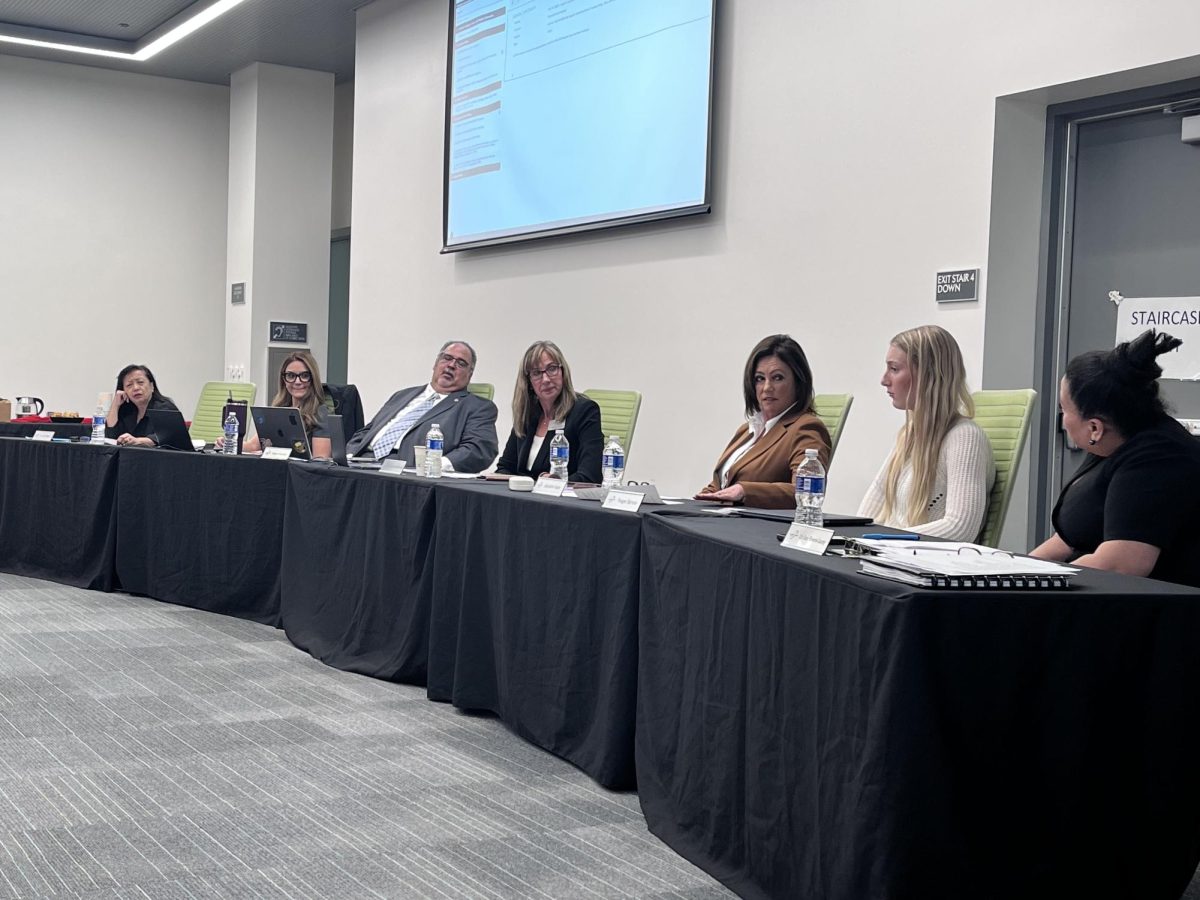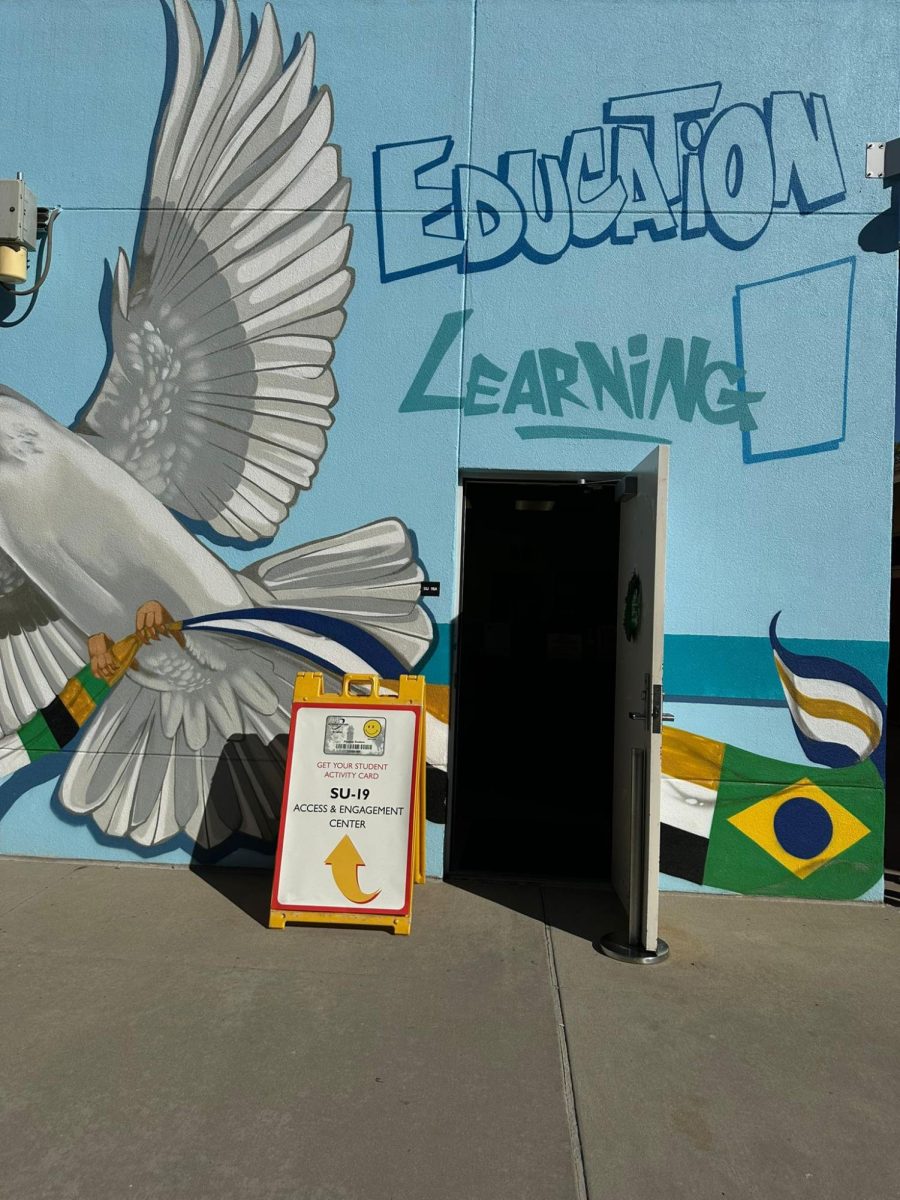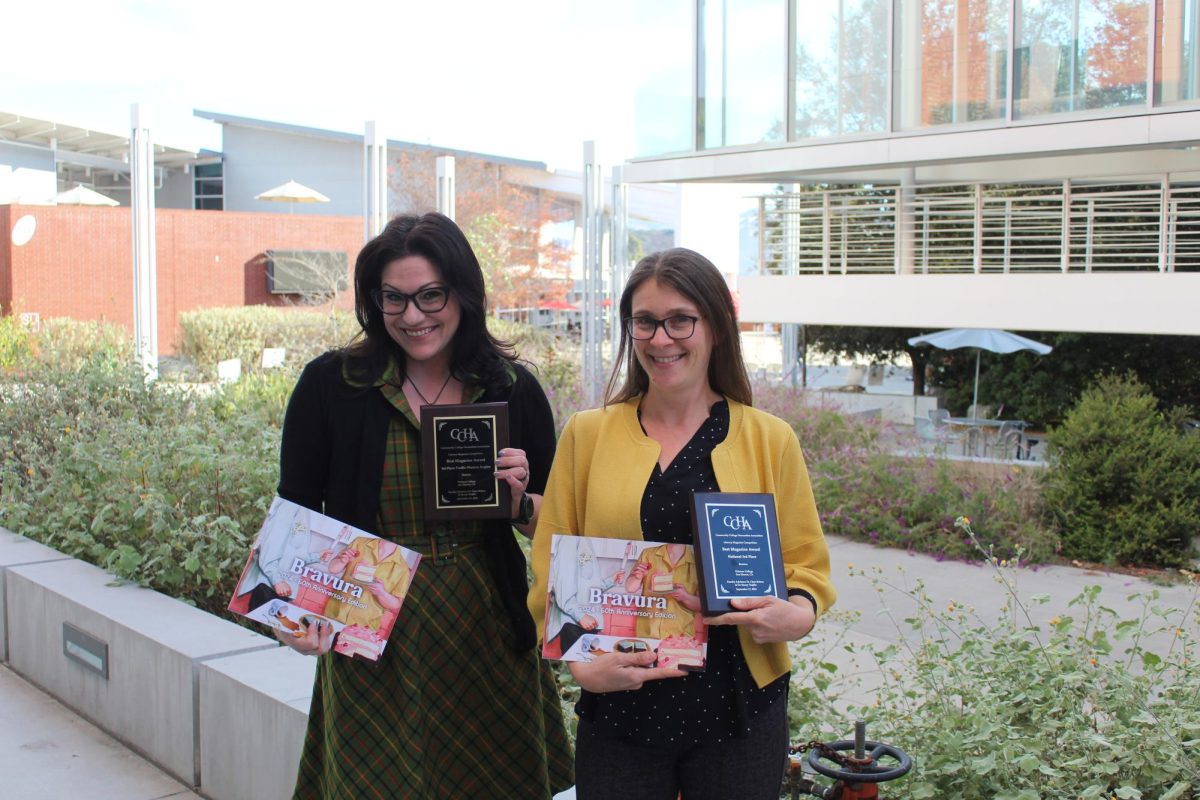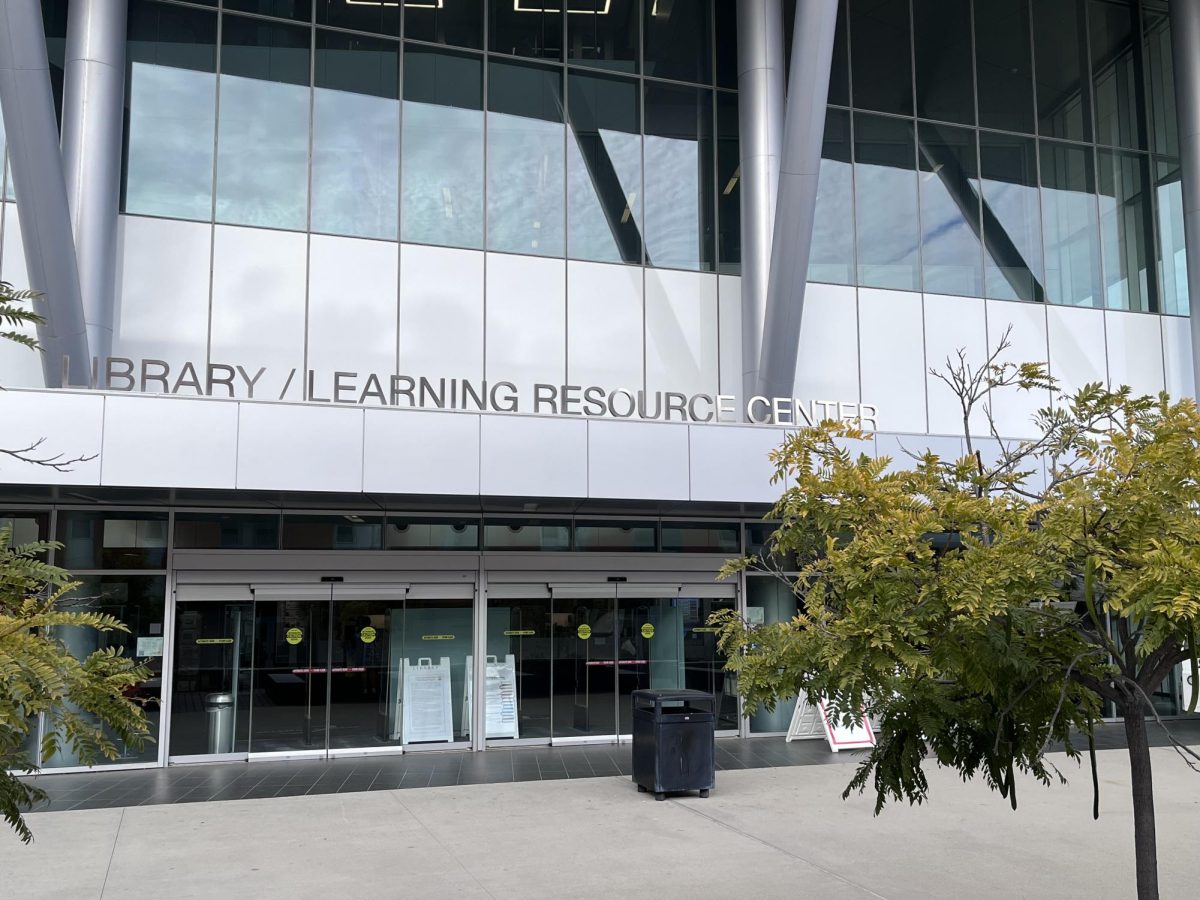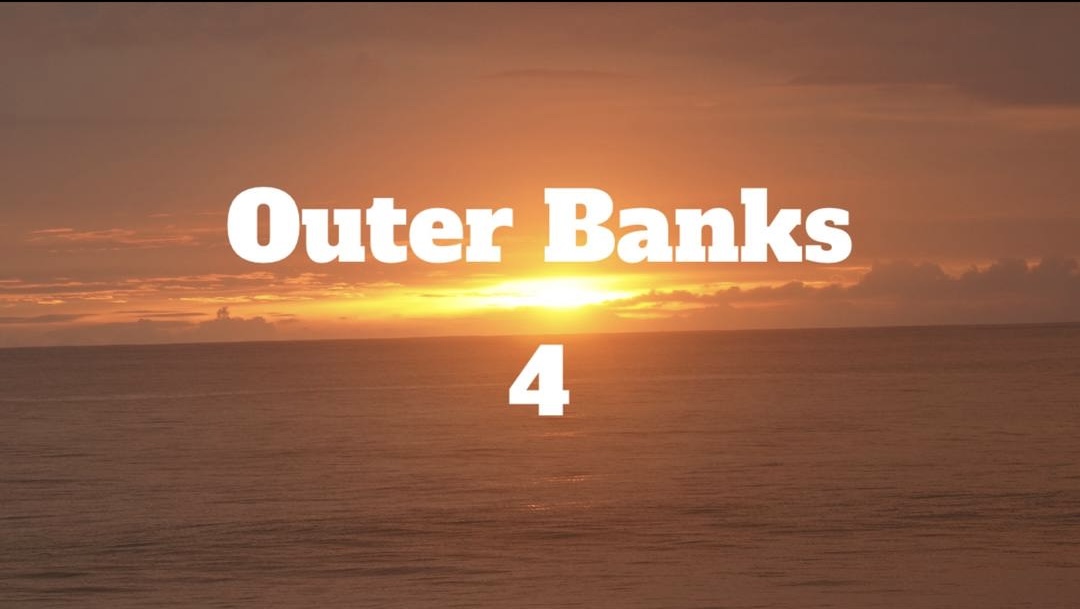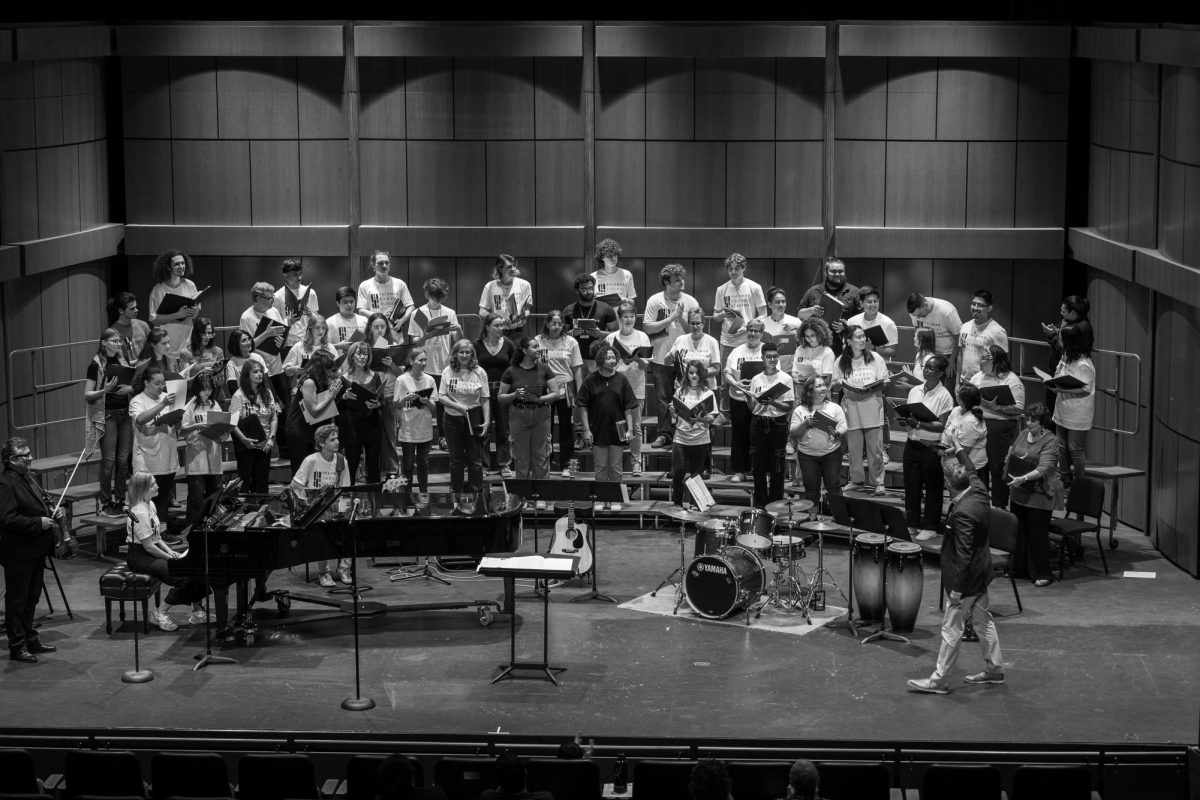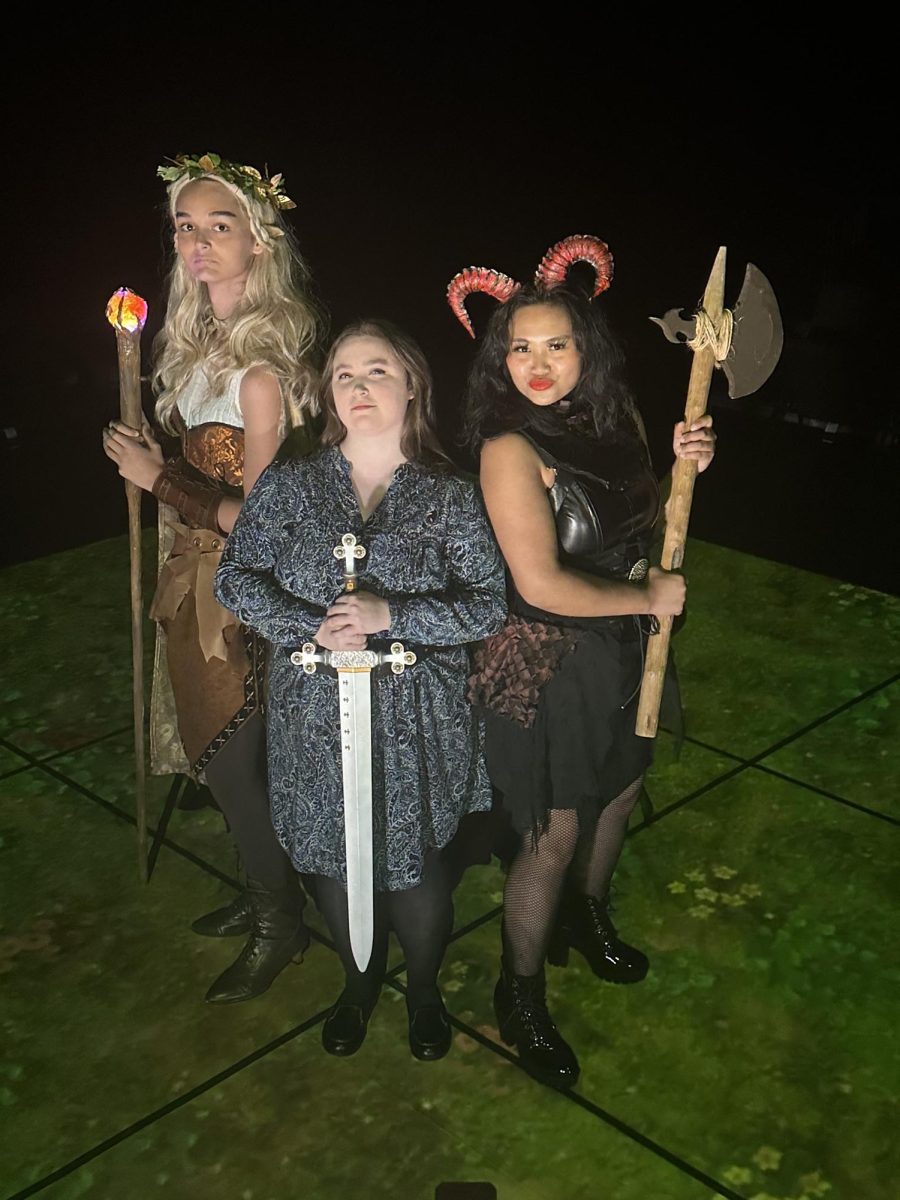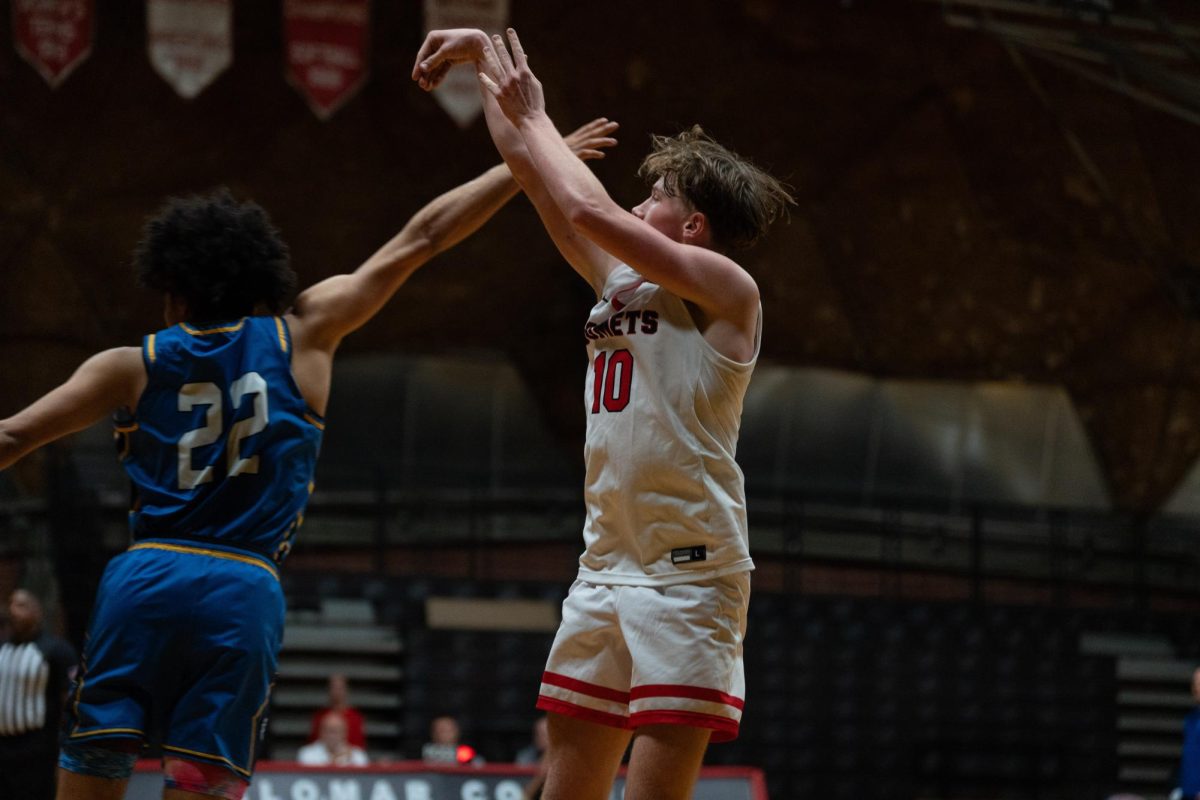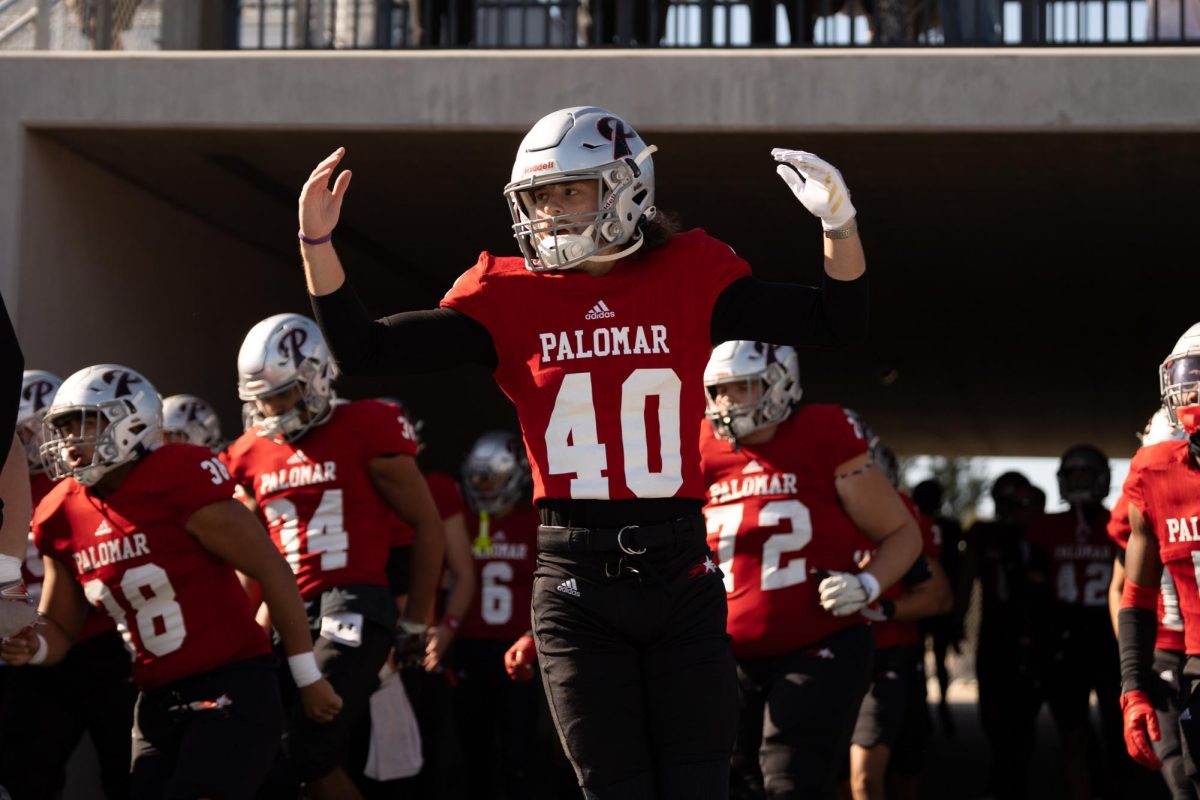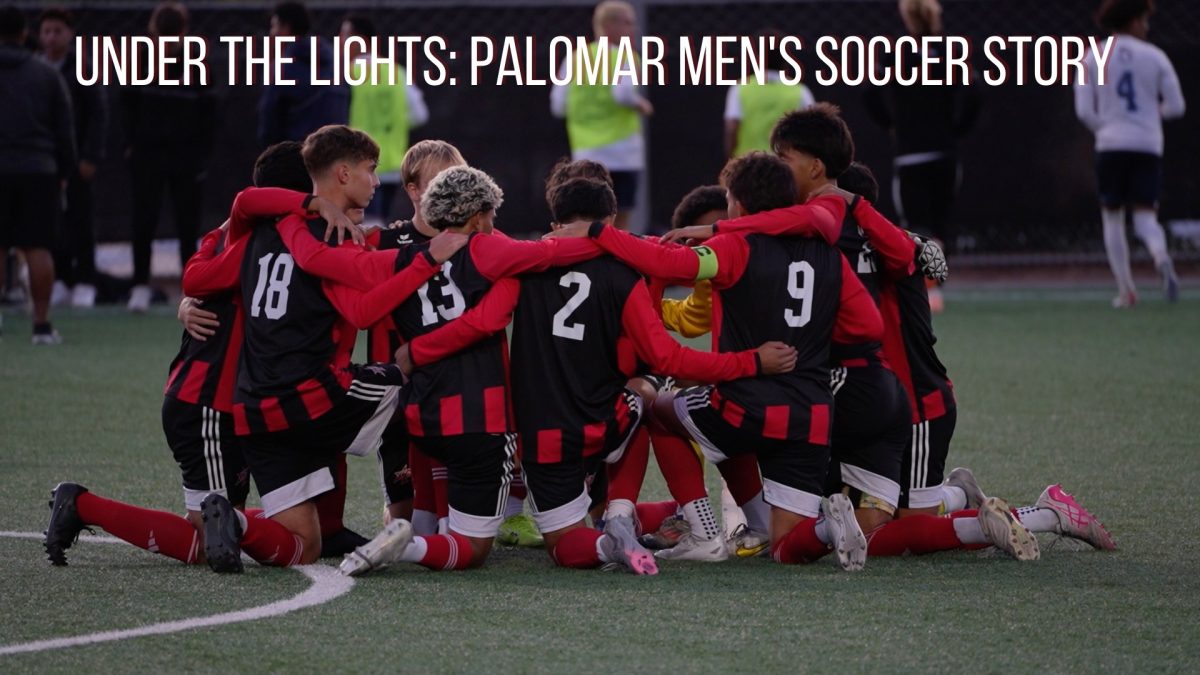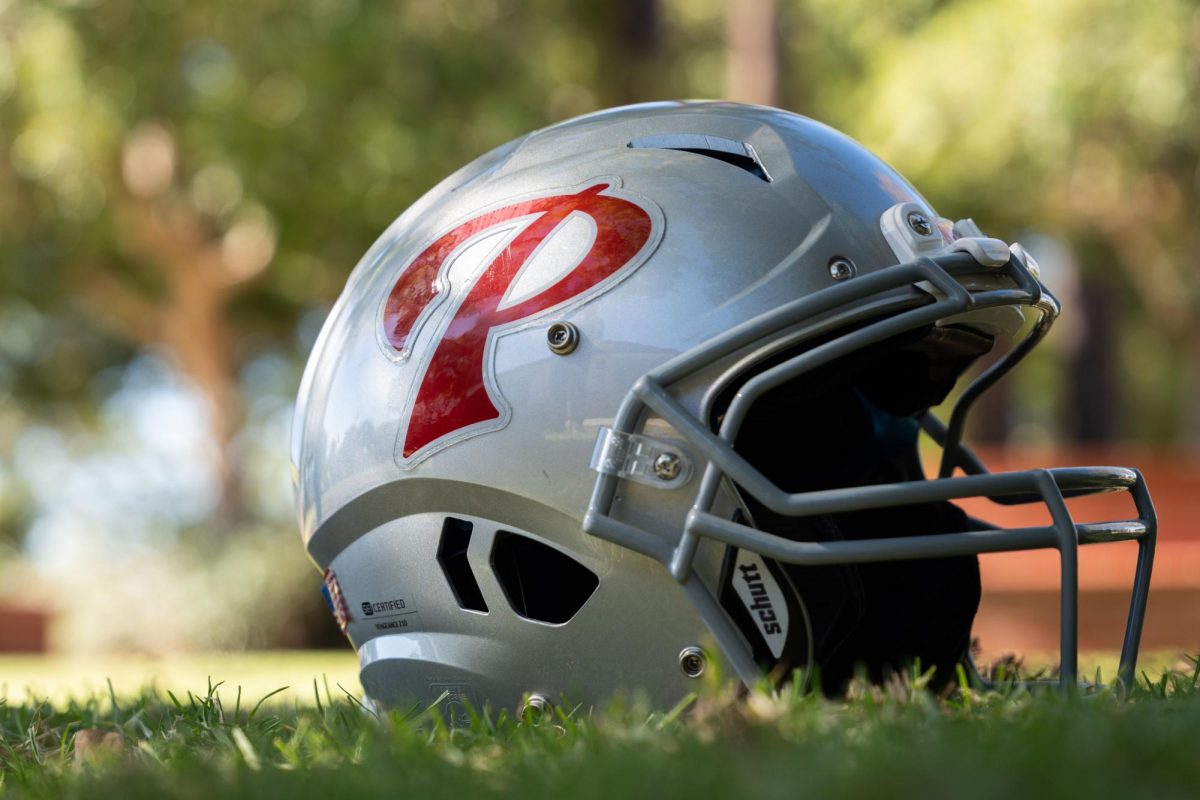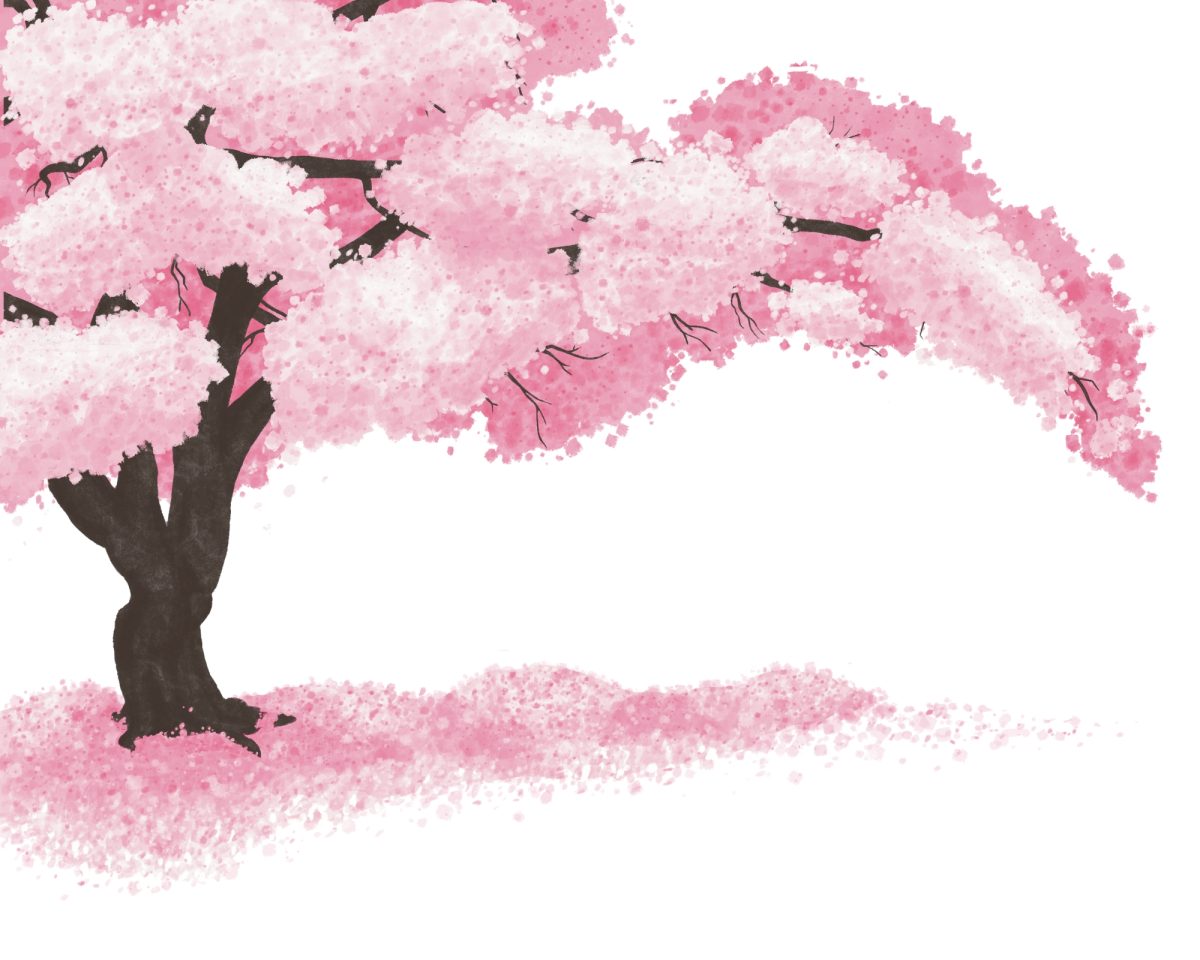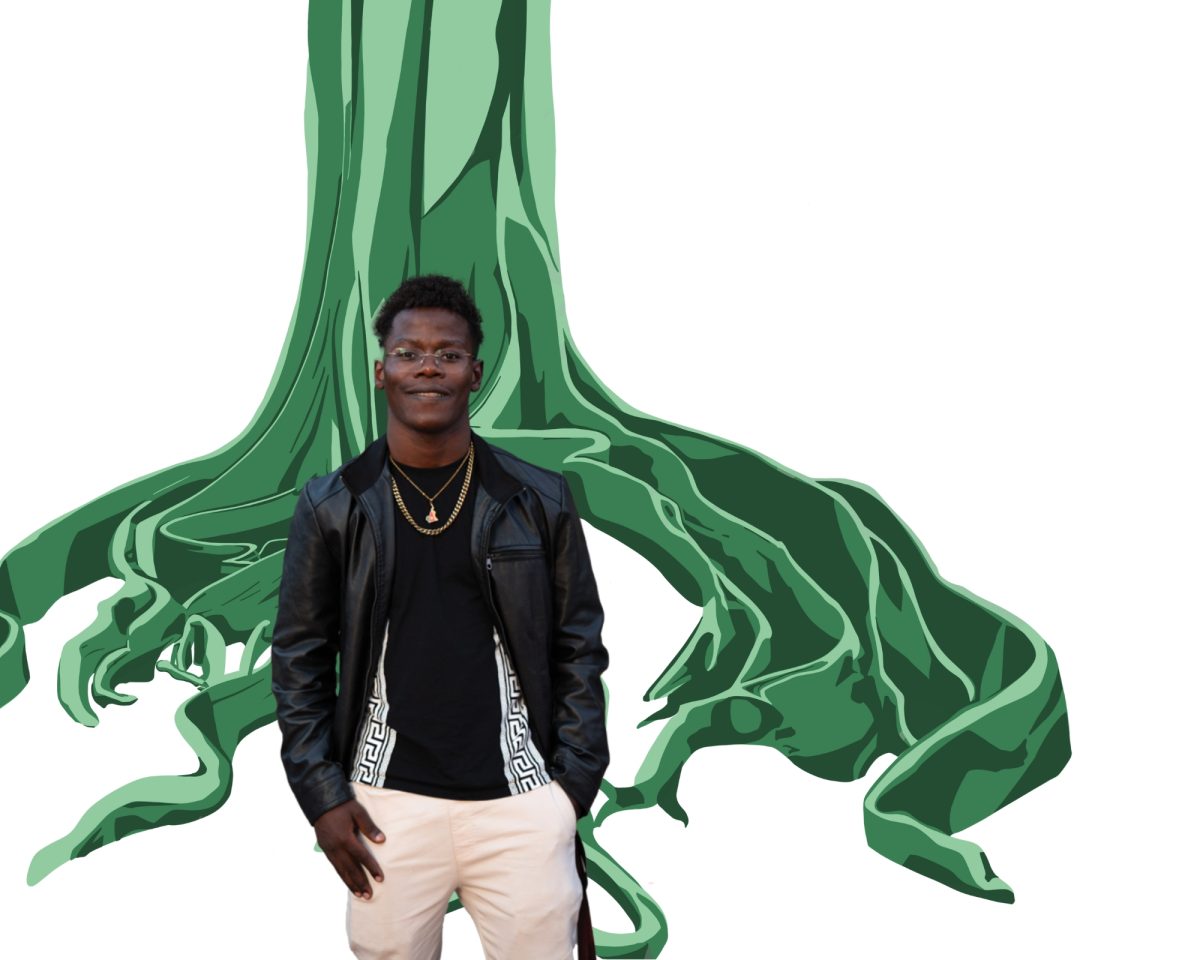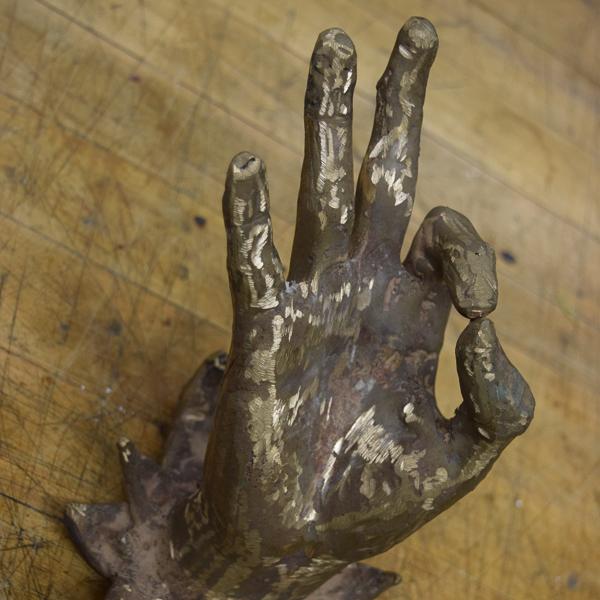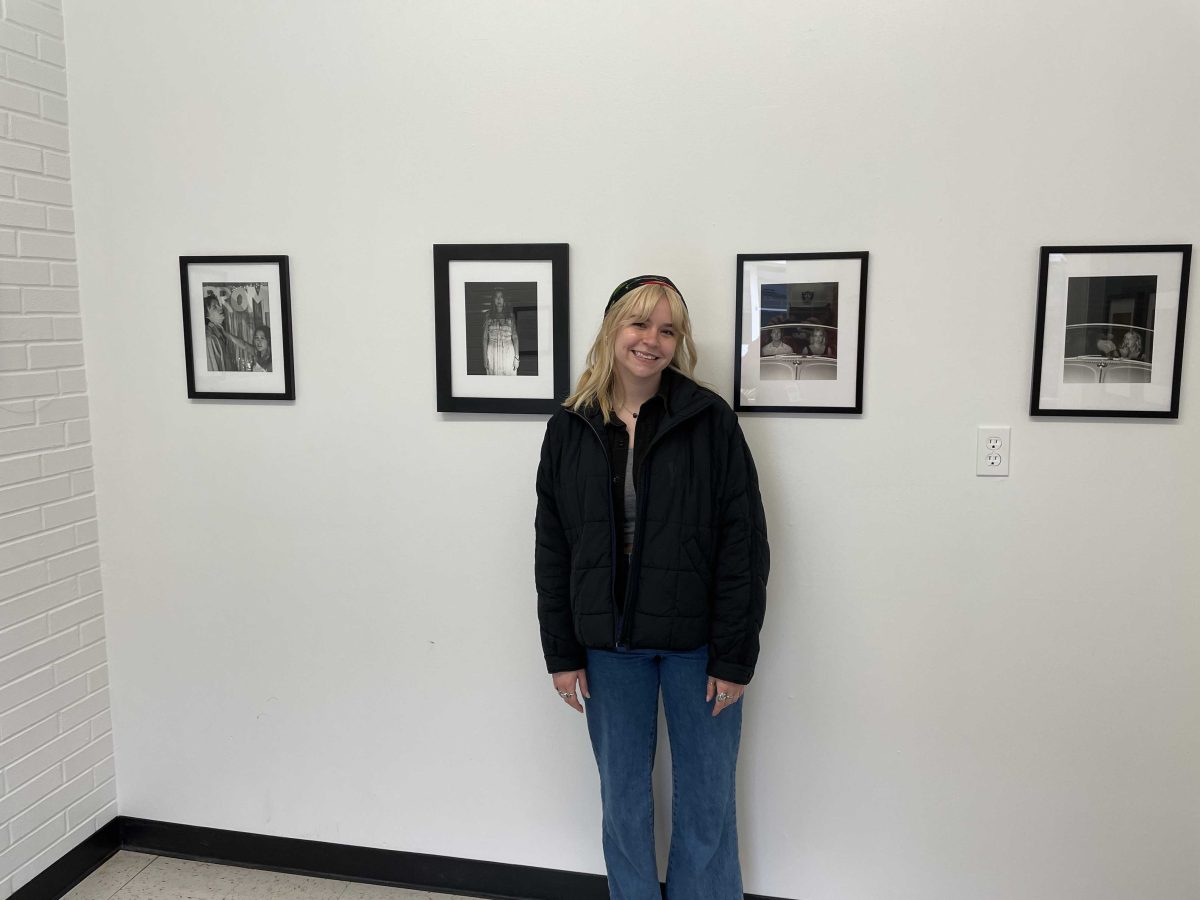Heat radiates from the crucible and 2,300 degree liquid bronze is being moved across the room by people wearing protective gear and helmets Nov. 30.
Welcome to a bronze pour. Palomar’s art department does a few bronze pours each semester in the art department and each one ends with a variety of student art pieces.
While it looks somewhat simple, creating a bronze piece is anything but. The process takes a large amount of time and effort explained Ingram Ober, an art professor at Palomar.
The actual bronze pour isn’t even halfway through the process. “Once you have the metal, you’re halfway,” Ober said.
Prior to the pour, students must make a mold and create an investment, the solid cylinder in which the liquid bronze is poured into. After the bronze has been poured and cooled, students break the investment and will have to clean, sandblast, and either polish or patina their piece.
This pour was part of the final project for the Introduction to Mixed Media and Sculpture class. This class is one of the few that works with bronze and foundry.
Students were instructed to do life casting, where they make a mold of a body part. Some students picked a smaller body part, such as a collarbone or hand, while others picked a larger section, such as their shoulders.
Palomar student Ricardo Baza made bronze replicas of his hands. One is very simple yet shows all of the lines of his hand while the other is smooth but has embellishment around the wrist.
“It’s time consuming. It is my first time… but I really enjoyed it,” Baza said.

Another student, Debra Crandall said she is enjoying the bronze process. “It’s fun and I am learning a lot. I have never done anything like this before,” Crandall said.
“I did a casting of my collarbone that I morphed into branches with a bird on top. I am going to hang it on my wall and use it to hang necklaces over,” Crandall explained.
Many of the students are art majors, but the class is open to students of different skill levels.

“If you have some sort of material or making experience, you can sort of jump in right away and be successful in introduction to sculpture and mixed media (ART 260),” Ober said. There are different classes that work with bronze and a few will be offered during Spring 2016.
To find out more information about the different art programs, visit www.palomar.edu/art.
Other art classes where students can do a metal pour:
– Introduction to Mixed Media Sculpture
– Design and Mixed Media
– Foundry I
– Foundry II
– Indirect Metal Forming
Bronze Pour Steps:
1. Make mold: Plaster or alginate mold.
2. Mold is filled with wax in order to reproduce inside of mold. Can shape and change the wax.
3. Spruing and gating: create channels for metal to flow into piece and vents for air to flow out.
4. Investment (Standard Investment): build cylinder around wax. Pour mixture of sand and plaster around the piece to incase piece in solid cylinder.
5. Kiln: Investment is put into kiln and wax is melted out. Sculpture shaped hole is left in the middle of investment, acting as a mold for the metal.
6. Take hot investment out of kiln, around 500 degrees internal temperature.
7. Metal is heated in the crucible; bronze is heated to around 2300 degrees.
8. Pour the metal into the investment. Metal fills the hole left by wax.
9. Metal solidifies and investment is broken from around the metal.
10. Clean the metal piece, making sure to get rid of remnants of investment.
11. Cut off all of the spruing and gating.
12. Grind and fix contact points until they are not visible.
13. Sandblast the piece.
14. Capture the surface wanted: either polish or patina.
15. Display the piece
Want more? Please visit the following links:
www.palomar.edu/art for more information on the different art classes.
https://www.youtube.com/watch?v=nDVodXS8Kh0 to view a video on a previous bronze pour.

